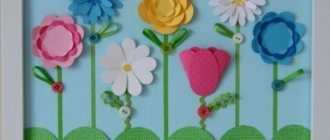Relay races in kindergarten
The relay race is not only a competition, but also a game that helps children unite as one team, develop dexterity and coordination of movements.
Relay races in kindergarten are held on a regular basis and not only during sporting events, but as a fun pastime in the group. It is important for educators to remember that they should not focus children’s attention on winning, because what is important is participation, not the end result of the game.
If the teacher decides to organize a relay race in kindergarten, then it is necessary to take into account the age of the children. This is necessary so that the child can clearly understand the task and not cause harm to himself or his health.
Time : 30-40 minutes.
Venue : in summer, on a sports ground with a soft surface; in winter, in a sports hall.
What is required for the relay race:
• Sports equipment • Explain the rules of the game to children • Explain the rules of behavior during the game in order to ensure the safety of children
Several examples of tasks for children of different ages
"Snake"
This relay race is familiar to each of us and is suitable for any age. It helps develop dexterity and coordination of movements.
The essence of the task is as follows: obstacles in the form of cubes, toys or pins are installed at a certain distance. Children are divided into two teams and line up in columns at the start. The first team members must run around the obstacles using the “snake” principle and return back to the team, where the next child is attached to the participant. The team that reaches the finish line first in its entirety wins. It is important that children do not knock down obstacles during the relay race.
"Jump rope"
Another fairly simple and painfully familiar task to everyone is without a jump rope.
The teacher marks the start and finish places with lines, after which the children are divided into teams. The first participant in the column receives a jump rope and, at a signal, begins to jump to the finish line and back. Then he passes the rope to the next participant and so on...
However, it is worth noting that this task is suitable for an outdoor relay race and the age of the children should vary from 5 to 7 years.
"Jumpers"
For this relay race you will need two large hop balls, on which the guys will jump to the finish line and back. The hop ball is passed along the relay to the next team member.
This task helps develop not only dexterity, but also trains children’s muscles.
The relay is suitable for children from 4 to 7 years old.
"Rope Walker"
Another type of relay race that helps train the ability to maintain balance and maintain balance.
To carry out the relay race, you will need a long, low bench, which the guys will have to walk on without falling, maintaining the balance of their body. Team members take turns passing the test and at the start they pass the baton to the next team member.
This exercise is suitable for children aged 5 to 7 years.
"Naughty Balls"
Another entertaining relay race for children of all ages is called “Naughty Balls.” To carry out the relay race you will need 4 baskets, buckets or basins. The size is at the discretion of the teacher.
The essence of the task: at the start, baskets with small balls are placed directly in front of the teams. Empty baskets await the guys at the finish line. The participants' task is to move all the balls from a full basket to an empty one. In this case, each team member can take any number of balls - as many as he can carry in his hands.
For the youngest kindergarten visitors, the task can be simplified: each participant carries only 1 ball until the balls run out. The winner is the one who moves all the balls faster than his opponents.
It is very important that the teacher understands that preschool children are very vulnerable and sensitive to defeat, so you should not focus children’s attention on winning relay races. The main thing is to hold the event fun, friendly and beneficial for the children.
Author: Natalya Shumaeva.
Relay games for children 5, 6, 7 years old
Outdoor relay games for children 5-7 years old
Rules of relay games
❀ An equal number of participants who are divided into two teams.
❀ Equal physical strength.
❀ Presence of an adult presenter. He gives the command “Let’s start!”, counts the points and makes sure that the players do not break the rules: do not run out ahead of time, put objects in place, and pass the baton to others on time.
❀ In order for children to understand the rules of the game well, a training competition is organized, without scoring points.
From about 5 years old, children are increasingly attracted to group, team relay games. After all, they have a spirit of competition. In them they learn what a team and the shoulder of a comrade are. Children begin to understand how important it is to obey the rules of the group, to go towards the goal and feel their importance, to make their small contribution to a big cause.
In everyday life it is not always possible to organize a relay race. After all, to create it you need participants - a large group of children. However, the relay can be played with four children. And if moms and dads join them, the game will turn into real “fun starts.” Relay races are always spectacular. It’s good if a support group gathers around you: it will be more fun for both spectators and participants. And if you were unable to gather two teams, play in a narrower circle, without competitive fervor, where friendship and good mood win, where the process is important for the sake of the process itself.
“Unload the car.” The teams have a simple task - to unload the car with bricks. To do this, two boxes with cubes (“brick machines”) are placed on one side of the court, and the players are located on the other side. The participants’ task is to run to the “car”, take the “brick”, return to the starting line, put the burden in the designated place and pass the baton to another participant. The team that moves all the “bricks” the fastest wins.
“Jump through the hoops.” Two teams stand behind each other in a column. 3-4 hoops are laid out on the site. The participants’ task is to run to the turntable (it could be a chair, a bush, a stone, a pillar, or some object) and return back to the starting line. On the way forward, you need to overcome obstacles: pick up each hoop, thread it through yourself and put it in place.
"Move the watermelons" . For this relay you will need six balls of different sizes (three for each team). Each participant is given a task: to carry three “watermelons” to the turntable and return back. The one who dropped the “watermelons” collects them and continues moving towards the starting line. Holding three balls in your hands and running at the same time is a difficult task. Therefore, players move slowly and carefully.
"Ball Competition" . Children stand in a column one after another (at a distance of one step) and pass the ball over their heads to a neighbor behind their back. When the ball falls into the hands of the player completing the column, he runs forward and becomes the head of the group, the rest take a step back. The game continues until all participants try themselves as the leader of the column. There is another variation of this game: pass the ball not over the head, but between the players’ legs.
"The Big Picture" . To play this game, you will need two easels with blank sheets of paper attached to them (you can simplify the task and attach two sheets of Whatman paper to the wall). Place felt-tip pens or thick-tip markers nearby. The presenter gives the teams a task - to paint a picture: a portrait of a person, a cat, a house, a robot, etc. (the task should be simple). Each participant must run to the “easel”, draw one detail of the image and return back. The first team to present its “masterpiece” wins.
"Sharp Shooters" . Two hoops are placed on the site. From a short distance, the participants in the game must hit the hoop with tennis balls. Whoever has the most hits wins.
"Faster, higher, stronger!" By the age of five, most outdoor games for children acquire a sporting nature. "Faster, higher, stronger!" - this Olympic motto becomes relevant and vital for older preschoolers. Both girls and boys are equally interested in active games with elements of running, jumping, and overcoming various obstacles.
Similar articles:
Outdoor games in the second junior group
Outdoor games for children under 1 year old
Outdoor games for children of senior preschool and primary school age
Outdoor games for children 3-5 years old in kindergarten
Outdoor games for children of the preparatory group indoors
“Fun Starts” for preschoolers
Snake
This relay is a universal type of team competition for children of any age . Its advantage is its comparative ease of execution, requiring only speed and teamwork. To conduct the “Snake”, cubes or pins are placed in a zigzag along the distance, which the children have to run around in a snake. Teams line up in a column at the starting line. At the teacher’s signal, the first participants go the distance and return to the team, where the second participants join them, and together they go the distance again. The winner is the team that is the first to run the snake in its entirety.
Running with a skipping rope
A daytime walk on the street can be diversified by holding this relay race for preschool children , for which you only need jump ropes according to the number of teams. On the playground, start and finish lines are marked at a distance of 10-15 m. Children are divided into teams and line up at the start, the first participants receive a jump rope. At the teacher’s signal, the children must overcome the distance by jumping rope, return to the team and pass the rope to the next participant.
Naughty balls
The “Naughty Balls” relay race offers a chance to demonstrate sleight of hand, in which participants have to move as many balls as possible from one basket to another. To run the relay you will need two baskets filled with small plastic balls and two empty baskets. Full baskets are placed near the teams on the starting line, and empty ones are placed at the finish line. In turn, each participant must pick up as many balls as will fit in their palms and quickly bring them to the empty basket, while trying not to lose them along the way. The team that can move the most balls wins.
Jumpers
You can have fun by replacing the physical warm-up with a moving relay race for children in the middle group “Jumpers”. To carry it out, ball hops are required according to the number of participating teams. The task of the competitors is to cover the distance by jumping on the ball and passing the baton to the next participant. Jumping on bright and colorful hop-balls will surely please the kids and will also help strengthen their muscles.
Tightrope walker
For older children, you can offer all sorts of relay races that require dexterity and balance. “Rope walker” is an excellent relay race option for children of senior preschool age. A gymnastics bench can be used as a “rope”, along which participants must get to the finish line and try not to jump to the ground. The winner is the team that not only completes the task faster, but also more accurately. You can simplify the task somewhat by replacing the bench with a conditional rope in the form of a line drawn on the ground.
Swamp
We offer another good relay option for developing dexterity and the ability to maintain balance. To carry out the relay race, you will need several low stumps, acting as hummocks in the swamp, arranged along a winding path. The participants of each team must pass through a conditional swamp along “bumps” faster than their opponents. To protect children from falls, you can replace the stumps with hoops placed at some distance, into which participants must jump with both feet.
The proposed relay races for children in kindergarten can be diversified and made more difficult by additional conditions, for example, timed running or easy obstacles, in accordance with the capabilities and physical training of the children. And another selection of fun relay races can be found here.








